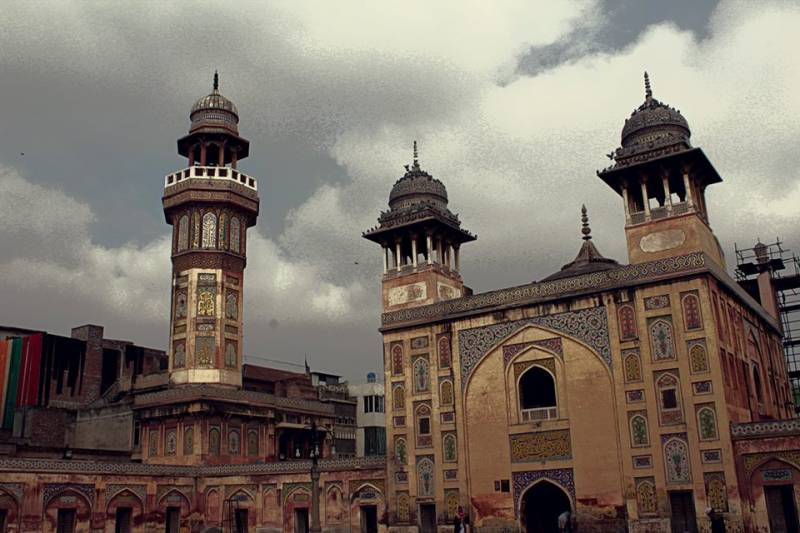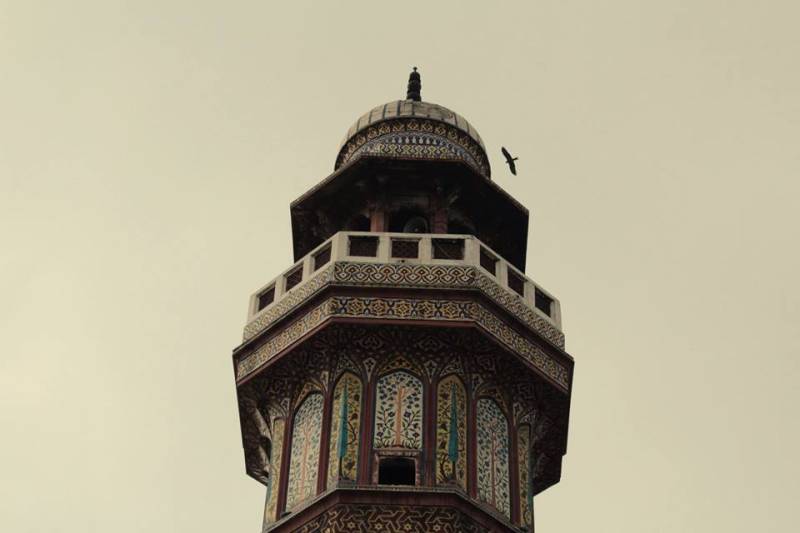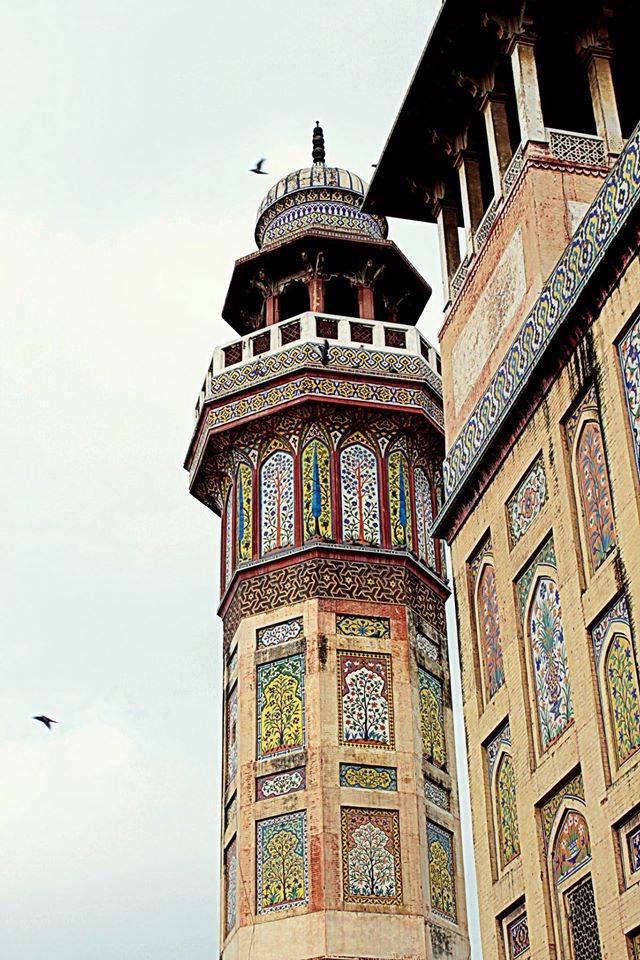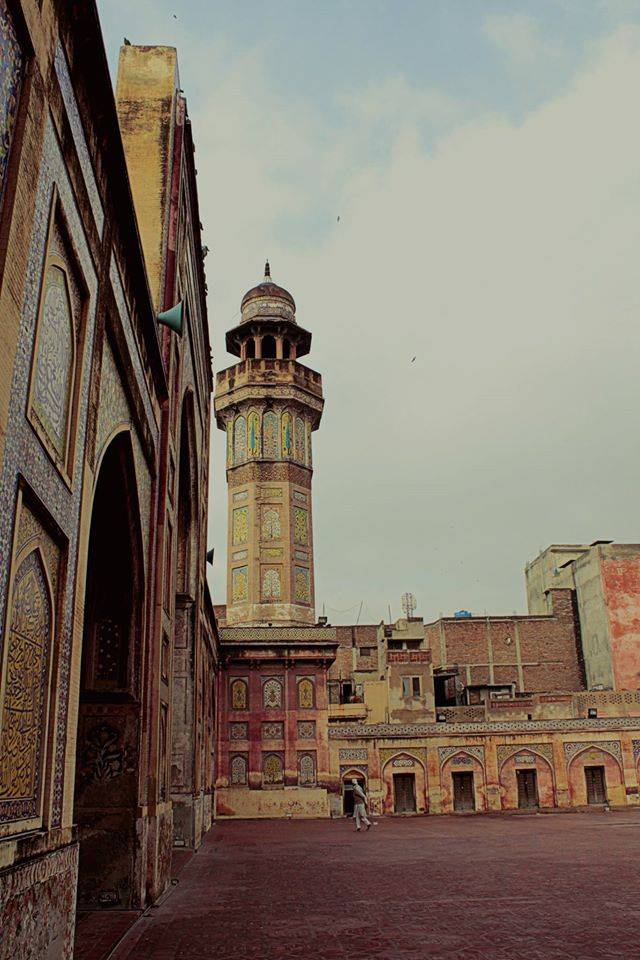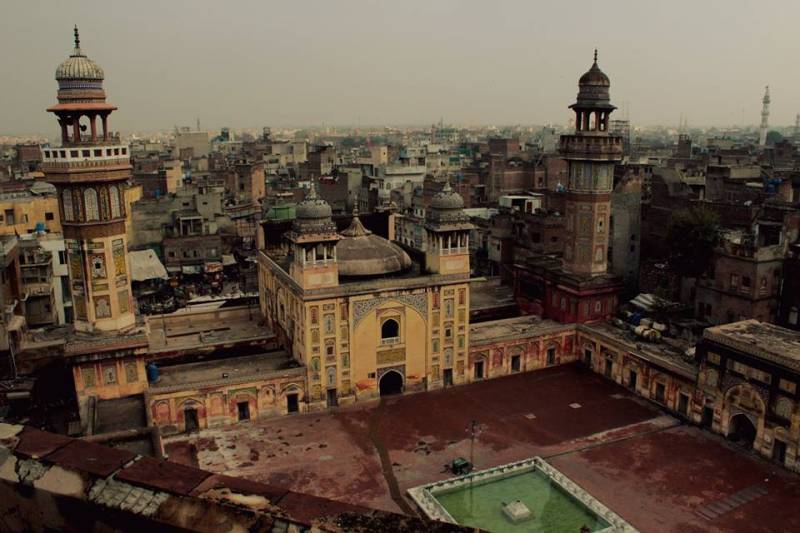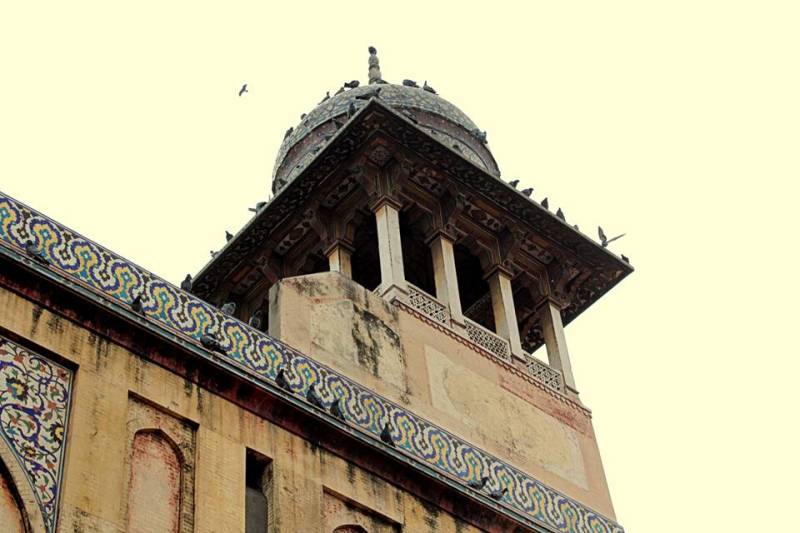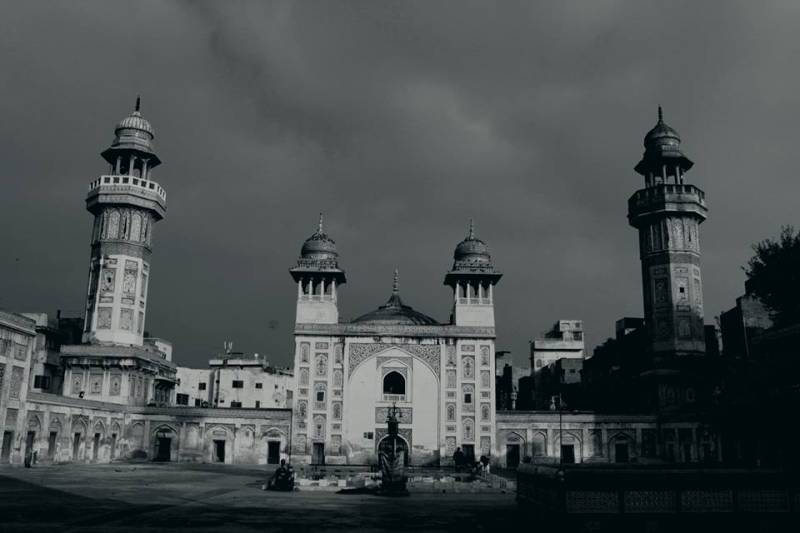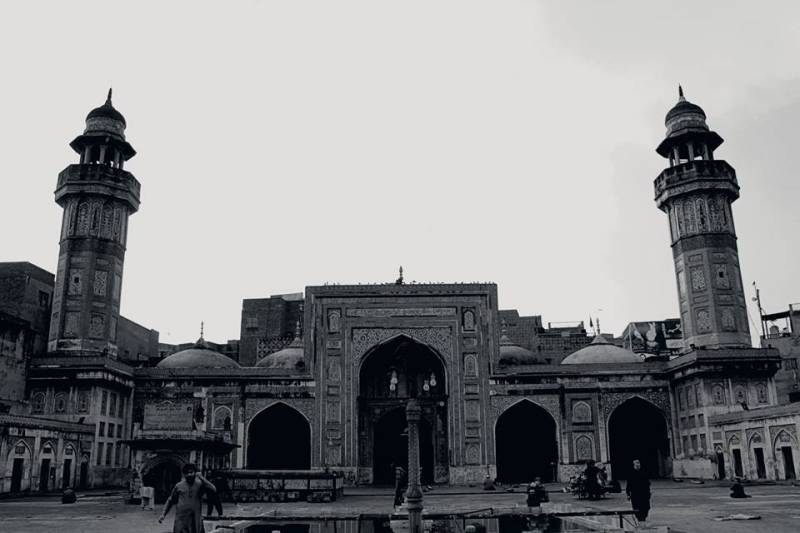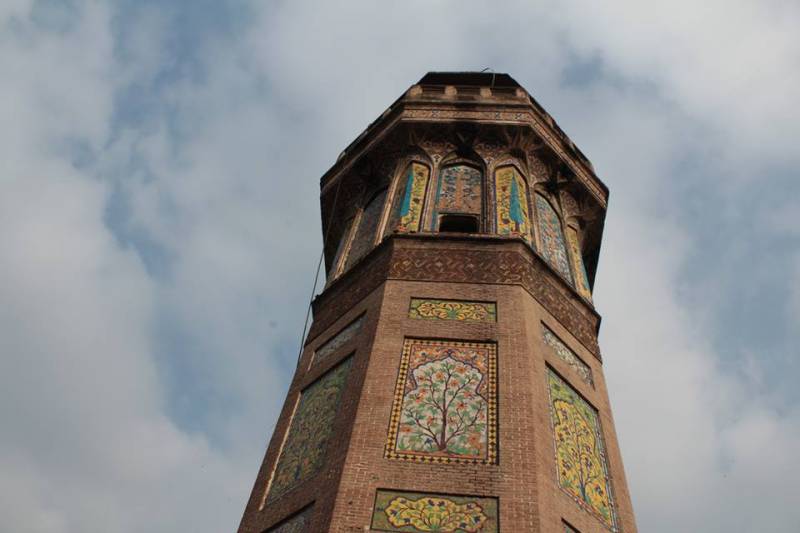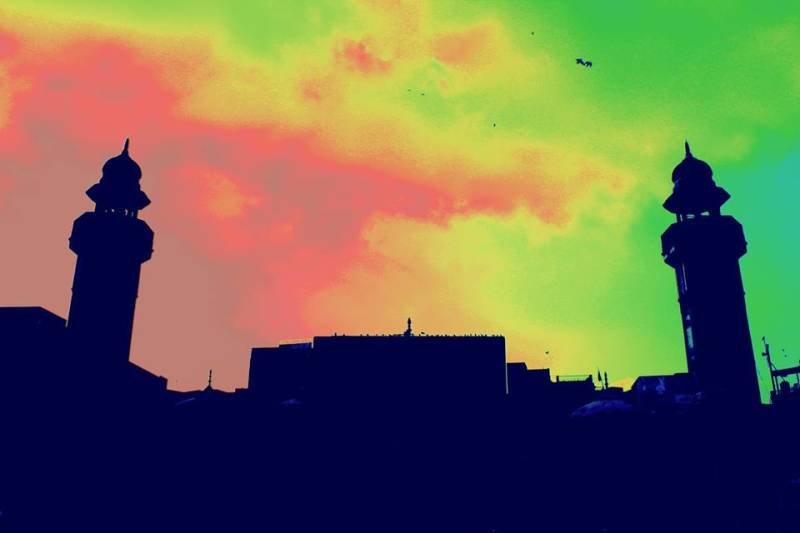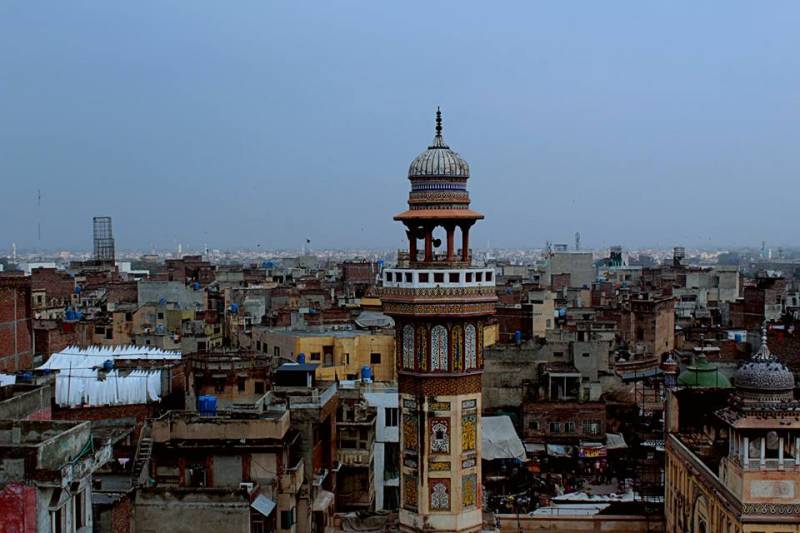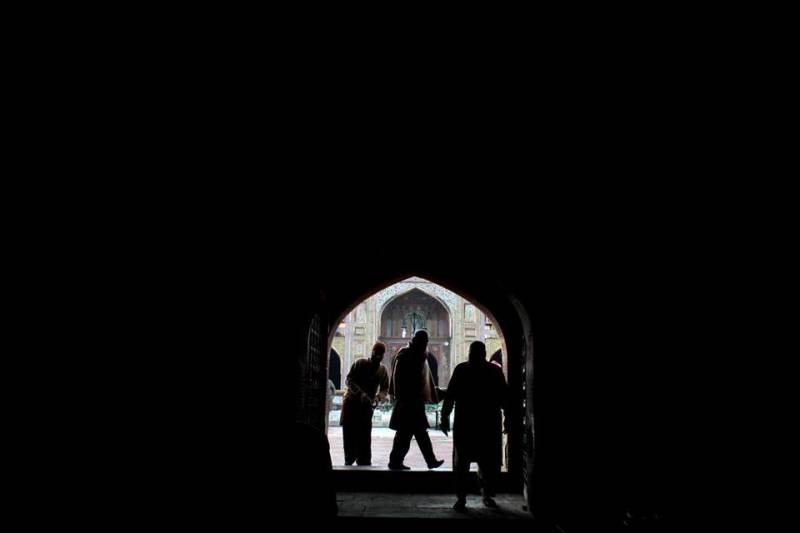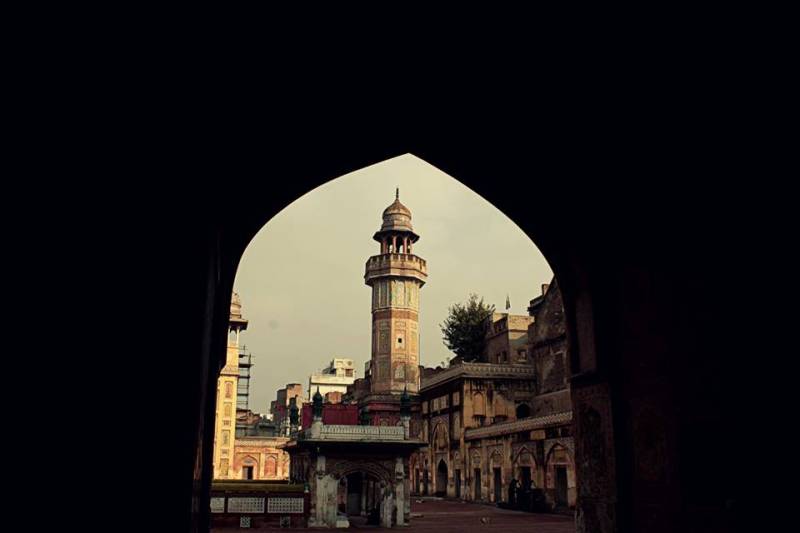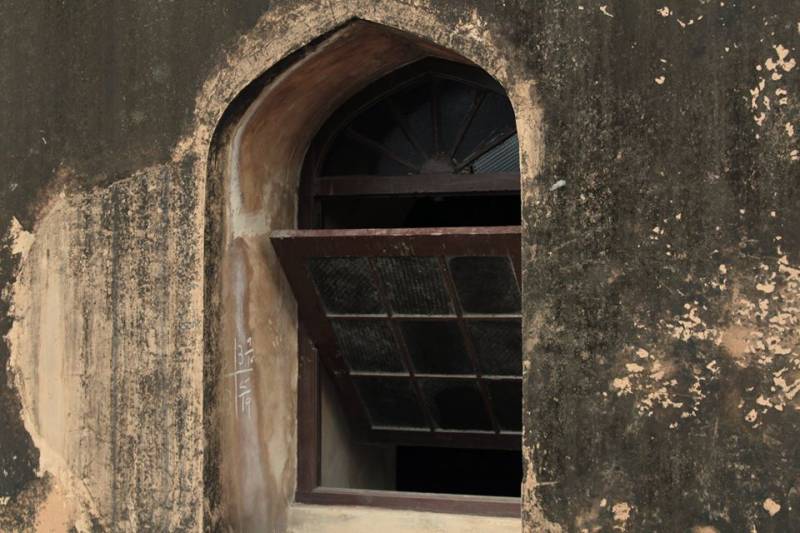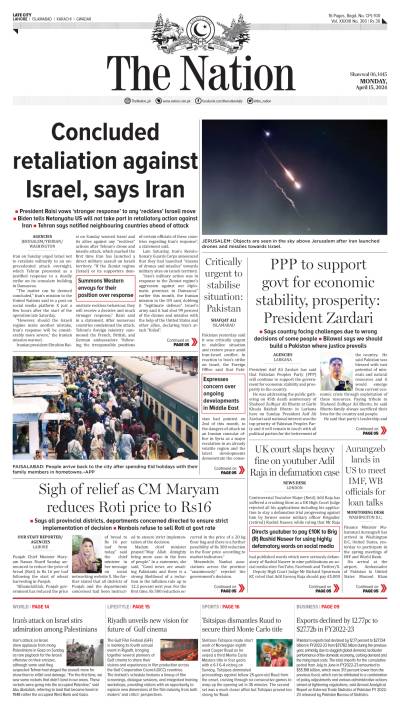Wazir Khan Masjid
Wazir Khan mosque was built in 1634 by Shaikh Ilm-ud-din Ansari, Viceroy of Punjab under Shah Jahan. Ansari hailed from humble origins in the town of Chiniot in the Jhang district of the Punjab. The mosque's distinguishing architectural feature is the use of minarets at each of its four corners--the first time such a design was employed in Lahore. The prayer hall follows the one-aisle five-bay motif that was first established in Lahore a generation earlier at the Maryam Zamani Mosque, which was later to find its full expression in the Badshahi Mosque built by Emperor Aurangzeb a half century later. Much of the mosque is constructed of cut and dressed brick decorated with glazed tile mosaics.
The Shahi Hammam bathhouse, also known as Hammam Wazir Khan, is the only remaining bathhouse of its type in Lahore. During the Mughal era, hammams (public baths) were introduced based on Persian models. The hammam was first established in 1634 by Sheikh Ilmuddin Ansari. It contained separate facilities for men and women to bathe and also included amenities such as a reception chamber and a small prayer room. In keeping with Persian precident, virtually the entire hammam was illuminated from above with small openings on the roof which also aided ventilation by allowing hot air to flow out from the facility. Since the walls had relatively few windows, merchants were able to set up shops directly abutting the hammam

